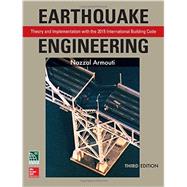Fully updated coverage of earthquake-resistant engineering techniques, regulations, and codes
This thoroughly revised resource offers cost-effective earthquake engineering methods and practical instruction on underlying structural dynamics concepts. Earthquake Engineering, Third Edition, teaches how to analyze the behavior of structures under seismic excitation and features up-to-date details on the design and construction of earthquake-resistant steel and reinforced concrete buildings, bridges, and isolated systems. All applicable requirements are fully explained—including the 2015 International Building Code and the latest ACI, AISC, and AASHTO codes and regulations. Advanced chapters cover seismic isolation, synthetic earthquakes, foundation design, and geotechnical aspects such as liquefaction.
Earthquake Engineering, Third Edition, covers:- Characteristics of earthquakes
- Linear elastic dynamic analysis
- Nonlinear and inelastic dynamic analysis
- Behavior of structures under seismic excitation
- Design of earthquake-resistant buildings (IBC)
- Seismic provisions of reinforced concrete structures (ACI code)
- Introduction to seismic provisions of steel structures (AISC code)
- Design of earthquake-resistant bridges (AASHTO code)
- Geotechnical aspects and foundations
- Synthetic earthquakes
- Introduction to seismic isolation








